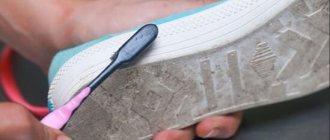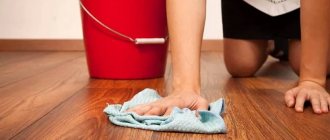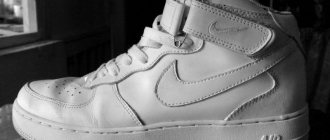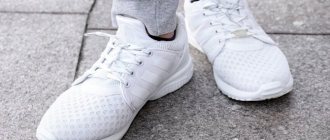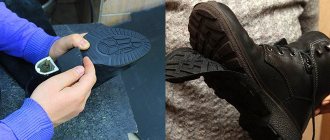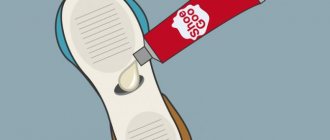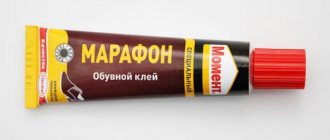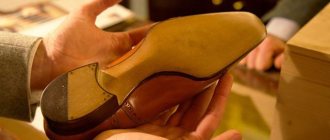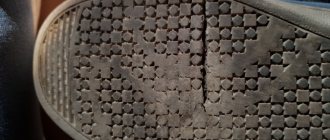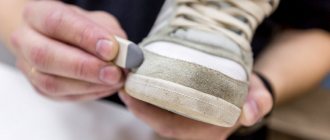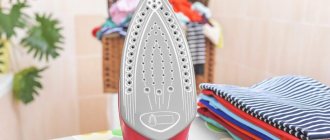The assortment of shoes includes thousands of types of models for all occasions. In addition to the obvious differences in styles, the models differ in the type of upper material.
Natural and artificial leather, polyester, leatherette, nubuck, suede, rubber - all kinds of materials are used by manufacturers to conquer the trade market.
Among summer models, shoes made from various types of fabric have not gone out of fashion for many years. Moccasins, clogs, sneakers, ballet flats, sandals, pantos, sneakers, shoes with fabric tops always look great.
White summer boots made of perforated fabric look very impressive. Consumers of all ages unconditionally fell in love with this type of footwear for a number of undoubted advantages:
- soft texture practically does not rub the skin of the feet in hot weather;
- the material provides ventilation for the shoes, the feet “breathe”;
- pleasant comfort when walking;
- The color range of the models makes it easy to choose clothes to match;
- fabric shoes are considered universal; they are used for sports, everyday activities, and going out.
The advantages of this type of shoe are obvious, but caring for them is also difficult. Leather shoes are easier to care for; they can be washed and cleaned in a matter of minutes with any detergent. Another thing is caring for fabric shoes.
Fabric moccasins, shoes and sneakers, despite their attractive appearance, instantly get dirty. In general, any fabric shoes must be carefully looked after. This is especially true for white shoes, let's be honest - such models are purchased only for one season.
If you wash and clean white shoes every day, then, despite careful care, they will invariably lose their original appearance. White sneakers or moccasins should be worn occasionally, as they say - on the boardwalk in dry weather.
How to clean on white soles
Before you begin to salvage the freshness of your appearance, you first need to clean your shoes of excess dirt. Any common shoe care cleanser or simple laundry soap will help with this.
To clean the desired surface, we need a foam sponge, a shoe brush or just an old toothbrush, rubber or silicone gloves, a clean rag, and water.
Let's consider several options for soft, gentle cleaning of the white soles of your favorite shoes using available products that do not have coarse abrasive particles, so as not to damage the material:
The most budget-friendly cleaning method is ordinary baking soda, which is found in every home. It costs literally pennies. But it cleans well, but at the same time carefully, without scratching the surface.
To clean dirt with baking soda, you need to mix it with a small amount of water, turning it into a paste. And with this mixture you need to gently clean the surface in a circular motion, then rinse with water.
Unexpected use of toothpaste. Yes, yes, it can clean not only tooth enamel. It has excellent cleaning properties in relation to many, including various types of rubber and PVC. It should also be applied to the dirty sole of the shoe using a brush soaked in water and left for just a couple of minutes, then cleaned with the same brush and rinsed off under water. This will not only give whiteness to the material, but also give it a fresh aroma.
You can also try peroxide, alcohol, WD40 cleaner, various grease removers, such as SIF, which can help with very fresh stains that have not yet been absorbed or dried.
But the right solution would be to find substances that could chemically react with polymers, dissolving them. You need to carefully apply them on shoes and it is best to try them somewhere in an inconspicuous place and only then, after making sure that the material of the shoes does not deteriorate, use them to remove stains.
Turpentine
Recently, shoes have been using fabric decor, and if a stain appears there, it will definitely not be possible to wash it off. Solvents in this case will only do harm - the fibers cannot be restored after them. Then you can use turpentine, but you need to work with gloves so as not to damage your hands. The stain is pre-moistened with water so that moisture prevents it from spreading to clean areas. After the turpentine has dissolved the resin, all that remains is to wipe off the residue with a cloth soaked in a soapy solution. There should be no greasy stains left on the shoes. Small resin stains can be removed with regular fabric stain remover.
How to remove stains from poplar Velcro
There is such a substance - sodium hypochlorite, which is the basis of bleach and gives the characteristic “aroma” of bleach.
An even more unexpected use of men's shaving foam. No, this is not a joke. Due to its composition, it has good cleansing properties. It should be applied to the cleaned surface of the sole of the shoes. To achieve the best whitening results, you can use it in combination with baking soda.
The usual and most common type of stain treatment is cleaning the wetted surface with washing powder.
Cleaning the soles of shoes until white, perhaps using alcohol-containing wet wipes intended, for example, for cleaning the inside of a car. In addition, this option is the most convenient if you are away from home and do not have various types of cleaning products, rags, sponges, water, etc. with you.
Mustard powder can be used as a natural powder. To remove contaminants, you need to dilute it with a small amount of water to a paste and rub the contaminants.
The whole point is how long ago poplar Velcro appeared on shoes, the process of removing them depends on this.
If we are talking about one day, then ordinary nail polish remover helped me cope. I did it this way:
Take a medical bandage and fold it in several layers to make a small pad. You need to make 6-8 such pillows.
Blot the pad with nail polish remover and rub it gently over the shoes; no need to rub, as this can smear it even more. As soon as the bandage gets dirty, change it to a new one, otherwise you will smear the Velcro on your shoes.
If more than a day has passed since the contamination, you can still try to wash it off with nail polish remover, but it is best to use brake cleaner. I don’t know about other manufacturers, but I used WURTH, the cleaner is under pressure, so just pour it on the shoes, and then after a while, as the Velcro has corroded, remove the liquid with a bandage or, if you don’t mind the liquid, rinse it under pressure again.
Emergency measures
Poplar bud resin is a natural polymer that, when it gets on any surface, eats into it very quickly. Therefore, if contamination is noticed on things outside the home, it is advisable to begin cleaning immediately. There are two ways to remove stains from poplar buds:
- Remove stuck scales from clothes or shoes. Then take a damp cloth and try to wet the stain as best as possible. Repeat the procedure 1-2 times with breaks of several minutes.
- Pour or spray cologne, perfume or eau de toilette onto the stain. After a few minutes, rub the stained area with a handkerchief. If necessary, perform these manipulations several times.
Remove tree resin from shoes
Tree resin is no less insidious than road bitumen, and during the picnic season it is very popular, because you can find it in hair, on clothes, and on shoes. The composition of wood Velcro differs from road Velcro, so the methods for removing it are different, but no less accessible.
- Tree resin heats up in the sun and flows down the trees. You can remove it from your shoes in the same way - by applying heat. Place a paper napkin on the tarred area. Turn on the hairdryer and heat the rosin with hot air. When the wood Velcro becomes soft, it can be easily removed with a napkin. You can also use an iron.
- Oil stains can be removed with acetone nail polish remover. Degrease tar stains with hydrogen peroxide. Then soak a cotton swab or piece of white cloth in acetone and wipe off the resin. For colored and suede shoes, use nail polish remover without acetone.
- You can use mineral water to clean delicate shoes. Dampen the tar stains with mineral water or soak the shoes completely in water. Soak the shoes in mineral water for 30 minutes, then rub the resin with a brush, it should come off.
- Black leather and suede shoes can be revived with regular Coca-Cola. This method is only suitable for dark shoes. Soak the resinous areas in a sweet drink for 40 minutes, then rinse in cold water until the resin is completely gone. Before drinking a carbonated drink, cool it in the refrigerator for half an hour.
- You can also clean the resin with soda and vinegar. Degrease stains with peroxide and wipe dry. Sprinkle the resin with baking soda and add vinegar. When the baking soda stops fizzing, wash your shoes in warm water.
Nitric acid
Nitric acid is the most effective way to remove linden from clothes. But due to its properties harmful to the human body, it should not be used for these purposes.
Hydrobromic acid
This tool can also quickly and easily solve the problem. But for the same reason as nitric acid, it is not used in this case.
Acetone
This product will help remove unattractive stains from clothes without harming human health. Of course, the last condition is only possible if the safety rules when working with acetone are observed.
Bleach
Chlorine-containing bleach is available to almost every housewife. Its big disadvantage is the very strong smell. Therefore, such a product should be used with extreme caution to remove linden from clothes.
Source
How to scrub linden, how to remove poplar stains from clothes
In early March, before the poplars open their leaves, the swelling of the buds leads to the release of a substance - sticky with a yellowish tint. Due to the wind, it partially falls onto the roadway, benches or sidewalk. Poplar resin gradually takes root on shoes, things or cars, but creates a problem in removing dried hard stains. For cars, the situation is simpler - a number of special cleaning products easily destroy annoying stains. For clothes, the prospects of being thrown away are many times higher.
Swollen buds secrete tarry substances that are difficult to wash off from clothes
Complexity of poplar stains
Poplar stains cannot be washed or soaked in soapy water. The sooner you try to remove a poplar stain, the more chances you have to keep your favorite item. Resin has a polymer structure that cannot be removed with water or alkali. Standard washing does not remove the greasy traces of poplars; washing powders are designed to remove light stains. In order to wash off the secretion of linden buds, it is worth trying a couple of methods. First of all, a substance that can react with resin.
Chemists have found that resins can dissolve in:
- concentrated nitric acid;
- hydrobromic acid;
- bleach based on chlorine.
Of the listed solvents, only some are suitable for use at home. Nitric acid is harmful to human health (concentrate), and hydrobromic acid damages tissue. Clothes made from natural fibers and undyed are more susceptible to acids.
Poplar buds leave extremely stubborn stains
Methods for dealing with poplar stains
Removal of the poplar substance is required in the shortest possible time. Efficiency is the key to victory over undesirable consequences. The first step is to remove the kidney (you should follow safety precautions, because it is difficult to wash your hands afterwards); it is not recommended to smear the remaining sticky substance. The damaged item, shoes, is carefully removed, the damaged area is treated with lemon juice and left for ten minutes. The next mandatory step is washing. If it was not possible to wash it the first time, there are additional methods that can remove even caustic stains.
Acetone or a nail polish remover containing acetone (available at a hardware store or pharmacy) helps to remove poplar resin.
It is worth considering that in addition to acetone, such products use additives in the form of essential oils or oil vitamins (vitamin E or A). Otherwise, instead of a solid stain, greasy stains will remain on things. Technical acetone is used in construction (diluting paints or varnishes) and, despite the pungent odor, it easily removes resin. The only caveat is that after using such a solvent, things are ventilated outside for a couple of days.
Acetone contained in nail solvent easily dissolves resin
For cars, the stages of kidney removal are different. To begin with, use a wet cloth, wrung out three or four times, to remove the sticky yellow substance. If desired, it is possible to remove the bud with your hands, but it is worth remembering that by crushing the bud, the rest of the resin will flow out of it (it is difficult to wash the surfaces of the palms and skin, and redness remains afterwards). You can remove stubborn stains using a cotton swab moistened with alcohol.
For final treatment, a special car detergent is suitable. There are products on the market designed to combat tar stains, but they are expensive.
A common problem in spring is sticky stains on shoes, often on the soles. Sub-zero temperatures help get rid of linden velcro on shoes. Stains that have been frozen for a couple of hours can be easily removed (the freezer or vegetable compartment of the refrigerator is suitable for this).
You can remove linden stains from your car with a swab soaked in alcohol.
Additional Helpers
Gasoline will help in the fight against poplar stains. Things after this treatment are washed with double the amount of washing powder. Don't be alarmed by the strong smell of gasoline; after a second wash, it disappears.
White clothes are treated with bleach. Substances containing bleach destroy traces of resin, but in the case of colored fabrics they cause loss of brightness. It is worth remembering that bleach, in addition to its advantages, gives clothes whiteness and depletes the fibers of the fabric. It is not recommended to overuse bleach.
Alcohol can get rid of linden stains. You need to wipe the stain with a cotton swab soaked in it, and then thoroughly wash the residue with water and laundry soap. Household milk is regularly used to remove resin. This is due to the alkaline composition of the soap.
Folk remedies surprise with their diversity. So a mixture of half a cup of turpentine with a teaspoon of egg yolk is applied to the damaged area and left for five hours (overnight for convenience). After washing the stains were gone.
People usually remove stains exclusively with turpentine, and light-colored items with soapy water.
With the arrival of spring, inconveniences arise, housewives wonder how to get rid of traces of linden or how to ensure cleanliness in the house? But with its abundance of diversity, this time of year brings us a bouquet of wonderful aromas and beauty.
hozuyut.ru
How to clean the white sole of sneakers and sneakers: remove traces of grass, stubborn dirt and yellowness
Sneakers and sneakers are considered the most popular and comfortable shoes for every day. But they are less practical than regular leather boots. The sole of the sneakers is made of specially treated rubber, which darkens over time. Are there effective ways to clean the white soles of sneakers from yellowness and stubborn dirt?
For old stains, simply wiping with a damp sponge is not enough. You can take it to a special dry cleaner for sports shoes. There they will clean away old dirt from both the fabric and the sole. But you can clean the white soles of shoes at home. You will need chemicals or improvised means, as well as a little time and effort.
Why does the sole turn yellow?
Modern rubber, which is used to make shoes, has one positive property - increased wear resistance. Manufacturers, for whom the quality of the product does not play a significant role, take liberties - replacing good material with synthetics with poor physical properties. This is done to give the shoes additional elasticity and flexibility.
If you do not have the time or opportunity to read the entire article, watch the video on this topic:
In factories, various components are added to the base for the manufacture of rubber soles, thus trying to extend the life of the product.
But over time, as well as under the influence of environmental factors, the original characteristics of the material begin to weaken. First of all, this affects the color of the sole. It takes on an unpleasant dirty yellow tint.
General tips and handy tools
Whitening the soles of sneakers at home is a delicate science. The same product can clean some sneakers and ruin others. There are several subtleties and tricks that will help make the cleaning process more competent and easier.
- Toothbrush with hard bristles. It is better to clean the white soles of sneakers with its help. It will have an effective effect on stains and will save more energy.
- For white sneakers - a white rag. Colored rags can “give up” their color when exposed to various chemicals. As a result of cleaning, colored stains will appear on the shoes.
- Cotton swabs for cleaning hard-to-reach places. You can also use small screwdrivers, wrapping them in a layer of fabric.
- First, gentle cleaning. If gentle methods do not help, only then move on to more intense ones. Although it is better to immediately get rid of paint with acetone.
- Secure the result with a special shoe polish. For white soles you need white or clear cream. It is applied after cleaning to dry shoes.
How to prepare crosses for cleaning
To prevent streaks from appearing on your sneakers, you need to prepare your shoes for basic cleaning: rinse thoroughly, remove dirt and stuck stones from the white sole. Follow this procedure:
- remove the insoles and laces (they are washed separately);
- make a solution of water and soap (30 g of shavings per liter of water);
- soak a sponge in the solution, rinse the sole, including hard-to-reach places;
- Wipe the sole with a dry cloth and proceed with further cleaning.
Machine wash: 4 rules
The washing machine will remove dirt not only from the sole, but also from the entire surface of the sneakers. However, the method is only suitable for good quality rag products. Suede or leather shoes cannot be machine washed. This doesn't just apply to sneakers. For example, leather sandals will lose their shape irrevocably after spinning in a drum. Also, do not put low-quality shoes into the drum - they will come apart in the machine or come apart at the seams. If machine washable, follow these four rules.
- Special bag. Use a special bag for washing shoes. This reduces the risk of damaging the drum or the shoes themselves. Alternatively, use a scrap pillowcase or wrap your sneakers in a piece of white fabric and tie it in a knot.
- Choosing washing powder. Depending on the color of your sneakers, choose a powder for colored or white laundry. For pure white sneakers, add bleach.
- Washing mode. Wash on a sports shoe or delicate cycle at a temperature not exceeding 30°C.
- Spin mode. Press at minimum speed.
Household chemicals: which ones will help?
How to make the sole of sneakers white again? Use professional solutions. Make sure that the composition does not contain chlorine - it can leave stains that are difficult to remove. Don't forget to test the product: apply to an inconspicuous area of the sole and leave for at least an hour.
Washing powder
Before cleaning the white soles of sneakers, dilute bleaching detergent in warm water until completely dissolved.
- Place the shoes in a basin so that the water covers only the soles.
- Leave for three hours.
- Scrub the sole vigorously with the solution using an old toothbrush.
- Rinse the sole with clean water using a sponge and blot with a dry cloth.
Bleach for clothes
- To prepare the solution, follow the instructions on the product label.
- Proceed by analogy with washing powder.
- Make sure that the substance does not touch the edging of the fabric part of the shoe.
- Do not work without gloves - bleaches are very aggressive for the skin of your hands.
Stain remover
- Apply the product only to contaminated areas.
- Rub in with a brush and leave for the period of time specified in the instructions.
- Rinse with clean water.
- Repeat the steps until completely cleansed.
Dishwashing gel
- Apply the product to the brush or directly to the sole.
- Rub vigorously over the entire surface of the rubber.
- Pay special attention to hard-to-reach places.
- Rinse with clean water.
Laundry soap
- Soak the soap.
- Rub the brush on the soap and start working on the sole.
- Lather the brush as needed to ensure that the product reaches all areas.
- Repeat the procedure until the result
- Rinse.
How to clean white soles on sneakers: traditional methods
How to whiten yellowed soles of sneakers and get rid of stubborn stains using folk remedies? “Grandma’s” methods can have a strong and sometimes even aggressive effect, so do not forget to test the product before the procedure.
Eraser
- Take a large white elastic band so that it is comfortable to hold in your hands.
- Lay down an old newspaper or rag - there will be a lot of dirty “pellets” from the eraser.
- Cut the rectangular eraser diagonally to use a sharp angle to reach hidden areas on the sole.
- Rub vigorously until desired result.
Toothpaste
- Apply the paste to the white sole and rub vigorously with a stiff toothbrush.
- Leave for 20 minutes and rub again.
- Rinse off with clean water.
- Repeat several times until desired effect.
Baking soda
- Dampen the sole with a damp cloth.
- Thoroughly rub the soda over it with a brush.
- To enhance the effect, add a little lemon juice to the soda.
- The result here will depend on the duration and intensity of the procedure.
- Rinse the baking soda off your soles.
Prevention
To prevent contamination, it is recommended to wash shoes only with warm water with minimal hardness. Excessively cold or hot compounds aggravate the problem, making the stains persistent.
After restoring its original appearance, the surface of the sole must be treated with white or transparent shoe polish. This will allow you to maintain the results for a long time.
It is forbidden to treat the sole with bleach and chlorine-containing solutions, as they increase the likelihood of the sole becoming yellow. Getting rid of such stains in the future will be problematic.
After each walk, be sure to wipe the soles with a damp cloth or soapy water - this will reduce the amount of dirt and simplify the process of removing them.
Well-groomed shoes look more beautiful and presentable than dirty ones covered with dust or yellow stains. Therefore, try to regularly monitor your favorite sneakers or sneakers, and also take into account all the recommendations for caring for them.
4 more options
Acids and active substances will help whiten rubber soles on sneakers and sneakers with minimal time and effort. The method of application is the same: apply, rub with a toothbrush, rinse with clean water. Don't forget to wear rubber gloves and a cotton-gauze bandage, and also cover the table surface when working with particularly aggressive cleaners. The substances listed here have approximately the same effect on pollution. Choose based on availability here and now from four options.
- Lemon acid . Sold in grocery stores, diluted according to the manufacturer's instructions. You can use freshly squeezed lemon juice instead.
- Acetone. It will especially help with stains from linden and poplar buds. You can use nail polish remover containing acetone. Without it, the effect will be lower.
- Acetic acid . It is not used in its pure form, but is diluted with water in a ratio of three parts water to one part vinegar.
- Washing powder, vinegar and peroxide. The mixture will help get rid of yellowness on the soles of sneakers. Mix bleach laundry detergent, vinegar and hydrogen peroxide in a 3:2:1 ratio. It will help lighten stains from poplar buds.
Kerosene
A very effective remedy is purified kerosene. It is sold in construction stores, and finding it will not be difficult. It is used to dilute and dissolve dried oil paints, and the resin slightly resembles their chemical composition. Kerosene can be safely used to dissolve tar contaminants, but shoes should not be soaked in it, otherwise they will completely fall apart. Gently wipe the stain with a rag soaked in the solution until it disappears completely. Usually after the blackness disappears, yellow spots remain on the sole. You can wipe them off with hydrogen peroxide.
Drying rules
When drying shoes, you need to follow the rules, especially if the sneakers have been completely washed.
- Temperature regime. Dry at room temperature. Do not leave sneakers on a radiator, near a heater or in the sun. The shoes may become deformed and a yellowish tint will appear that cannot be cleaned.
- We remove the water. Use laces to hang the boots upright to drain any remaining liquid.
- Keeping the shape. Fill the sneakers with crumpled paper - this will help maintain their shape and dry faster.
The choice of a specific product before washing the white soles of sneakers will depend on your cleaning experience. The more effort you put in, the better the result will be. Especially for old stains. And the best way to keep sneakers in perfect condition for a long time is mandatory care after each wear.
How to clean shoe soles at home?
The effectiveness of shoe cleaning work depends, first of all, on the material from which it is made.
If the structure is porous, then the dirt will be better absorbed and you will have to try to return the sneakers or sneakers to their original appearance.
The relief of the sole also plays an important role. A smooth surface will be washed many times faster than if there are “holes”, “channels” or “cavities” on it.
You can restore the perfect whiteness of the soles of shoes that have not been worn daily for several months. Regular cleaning is the key to success.
The most effective way would be to go to the dry cleaner. Specialists using professional products will turn a pair into a new one in a matter of hours. But not everyone can afford such services, and not everyone wants to spend time searching for a reliable institution. Then you can try to wash your shoes from dirt and yellowness at home using available products.
